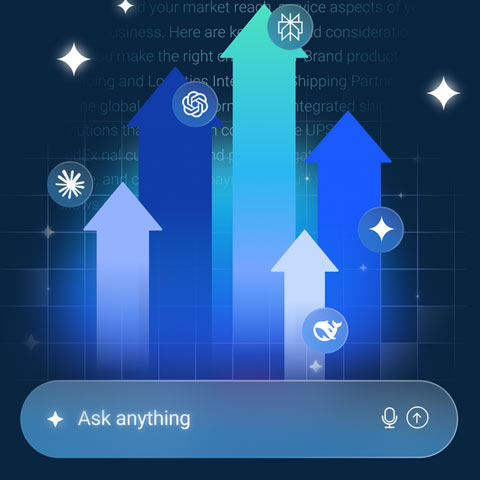How to Buy Data - When Every Penny Counts

More so than ever, it is vitally important to ensure the data you use is of the highest quality, anything less and you risk jeopardising the success of your whole campaign. With the current economic climate, now is not the time to waste valuable time, energy and money due to poor quality data. Use the three steps outlined in this paper to ensure you buy the data you need to achieve results.
Get the downloadBelow is an excerpt of "How to Buy Data - When Every Penny Counts". To get your free download, and unlimited access to the whole of bizibl.com, simply log in or join free. |

|
Prior to finding a data supplier, it is often very useful to ask yourself three basic questions. This will ensure the data you obtain can be used to meet all your requirements and the results expected will be clear in your mind.
1. What marketing medium do you wish to use?
It may sound obvious, but having a clear understanding of how the data will be used is incredibly important. When purchasing a database for a chosen medium, you need to check what base information is provided. Additional information such as telephone numbers, fax numbers or email addresses may not be included and will need to be budgeted for.
You may be considering:
- Direct Mail
- Telemarketing
- Email Marketing
- Fax Marketing
2. What information do you need?
Generic company databases have cheaper base rates compared to databases with in-depth information such as IT Infrastructure (e.g. No. of PC’s) and Financial Information (e.g. Profit Margins). The base rates of a database and any additional database costs e.g. selection fees or minimum order value should be researched as it can affect your overall budget.
Costs of data fluctuate according to:
- Type of selections used
- Information provided
- Size of database
3. How often do you wish to target this database?
Databases are sold with different licences. The cost of your database will depend on the number of times you need to use it. If you plan to use the database more that once, you need to enquire as to what type of licence the database you need to purchase.
Although this will vary between suppliers, the most common types of licenses are:
- One-off use – usually mail only
- One-off campaign use – mail plus telephone numbers
- Limited time multiple use – use as many times as needed within a certain time frame
- Eternal use – use the data as many times as needed without a time limitation
Depending on the complexity of the data you are sourcing, there will be a variety of data criteria you can choose from. This is one of the most important aspects of your campaign, as the data you select will determine the success of your campaign.
There are 3 key points to remember when selecting your data:
- Have you researched your existing customers?
- What level of information is required?
- What selection criteria are available?
1. Have you researched your existing customers?
Your existing customers will give you a good insight into the types of companies that you have found success selling to. Look at key criteria such as geographic location, company size, industry sectors and the job function.
2. What level of information is required?
The medium you are intending to use for your campaign will determine the level of information you require from your selections. If requiring data for an email campaign for instance, you need to ask that all selections be populated with an email address. The information you require also affects what direct marketing legislation is relevant to your campaign.
Want more like this?
Want more like this?
Insight delivered to your inbox
Keep up to date with our free email. Hand picked whitepapers and posts from our blog, as well as exclusive videos and webinar invitations keep our Users one step ahead.
By clicking 'SIGN UP', you agree to our Terms of Use and Privacy Policy


By clicking 'SIGN UP', you agree to our Terms of Use and Privacy Policy
3. What selection criteria are available?
Following your market and customer research, you should have a good idea of the kind of organisation attributes you’re looking for. There are four key areas to first consider when selecting data: industry, geography, size, and decision maker.
Try to use the criteria to select companies who will find your information “relevant” (nothing annoys recipients more than information about things that they COULDN’T get any use from). It also creates the chance for your information to be kept on file and may produce extra orders, over a longer period of time.
Use the hints below to maximise your chance of using the highest quality data available
1. There is no substitute for a data provider verifying each contact by phone
Always ask a potential supplier how they collect their data. If they are vague or unable to give an answer, steer clear!
2. Data suppliers are not immune to economic pressure
Be wary of suppliers who regularly and heavily discount – more often than not, you get what you pay for. It’s easy to focus on the short-term cost savings, but going on price alone will invariably lead to decreased response rates and poor results. The quality of a database is generally reflected by the price paid, due to the cost of regular and in-depth updating methods used by the data company.
3. A sign of things to come
Another factor to bear in mind is the availability of staff to deal with your enquiry. If you are finding it difficult to get through to a representative, it could be a sign of overstretched resources, which may prove problematic if help is needed at a later date. Use the questions below to get a better understanding of how the supplier operates and ask yourself whether you feel confident in their answers.
4. How is the data collected?
Data can be collated through a variety of methods, from tele-research to magazine subscribers. Validated data e.g. tele-researched normally of a higher quality than lists collated via other methods i.e. exhibition attendees or web harvesting.
5. How is the information kept up to date?
Like data collection methods, updating methods vary from regular mailings to tele-research, and from gone-away updates to information given by clients. Example: Companies with lists of subscribers to published media will send their customers information on a monthly basis and use the response from this to update their information. This relies on mailers being sent back, and will not account for those that simply get binned.
Lists from exhibitions, conferences and seminar attendees are very rarely updated, if at all, after the event. It is also widely understood that where a reward is offered (a free magazine subscription or exhibition entry), people are likely to exaggerate their status in order receive this, thus leading to inaccurate information being collected.
6. What quality guarantees are in place?
A good gauge as to the potential quality of the database is how confident the supplier is in their own product. A strong guarantee (such as refund on any gone-aways) will establish confidence and will mean you only pay for the contacts that receive your message.
7. What is the average age of the data?
Most data companies state that their information is updated on a daily basis. Although this statement is correct it can be misleading with the actual age of marketing data varying considerably from 6 months to an incredible 3 years. By asking the average age of the database and taking into consideration the types of businesses and contacts you will be targeting, you will be able to be sure that the oldest record supplied will still be relevant to you.
Want more like this?
Want more like this?
Insight delivered to your inbox
Keep up to date with our free email. Hand picked whitepapers and posts from our blog, as well as exclusive videos and webinar invitations keep our Users one step ahead.
By clicking 'SIGN UP', you agree to our Terms of Use and Privacy Policy


By clicking 'SIGN UP', you agree to our Terms of Use and Privacy Policy









